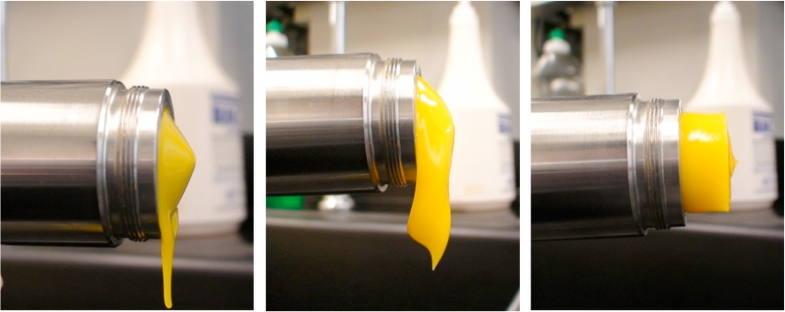“The Kitchen As Laboratory”: Measuring the Texture of Egg Yolks
A collection of essays about every aspect of culinary science shows how much more there is to understand about even the most familiar items

One of the most fascinating threads running through The Kitchen As Laboratory, a collection of essays edited by a trio of food scientists and published earlier this year, is the application of rigorous testing and measurement to a realm that has classically been very subjective. In the test pictured above, after egg yolks are poached at a constant temperature for a varying number of minutes, a rheometer is used to precisely measure the resulting texture, in pascal-seconds.
Cesar Vega, a culinary scientist at Mars Botanical, used the rheometer to debunk the contemporary received wisdom that the texture of a cooked egg is a function of temperature but not time.
He demonstrated that eggs’ textures become increasingly thick as a linear function of both time and temperature — if you hold an egg at 60°C (140°F) for 300 minutes, it will achieve the same texture as if you hold it at 65°C (149°F) for 15 minutes.
And the book is full of such delectable morsels. An essay by Malcolm Povey, about a series of experiments establishing the role of hearing in the enjoyment of eating, features a delicious-sounding recipe for crisp-battered fried fish which includes the instruction, after frying the fish: “To test for crispness, place the battered fish on the texture analyzer platen and record the force displacement and acoustic output as the probe pierces the batter.”
The book, compiled by Cesar Vega, Job Ubbink, and Erik van der Linden, also includes contributions from Arielle Johnson (on stretchy ice cream); Aki Kamozama and H. Alexander Talbot (a better way to make cookies using a vacuum (which forces moisture deeper into the flour)); a method of hyper-crisping poultry skin from the Modernist Cuisine kitchen laboratory; and a foreword by encyclopedic eater Jeffrey Steingarten.